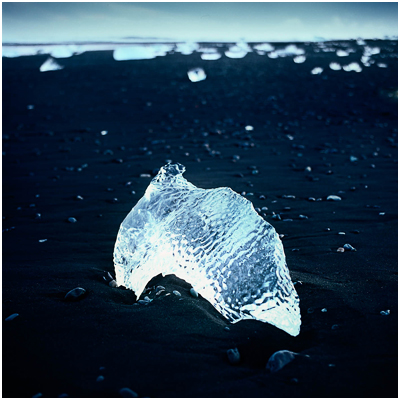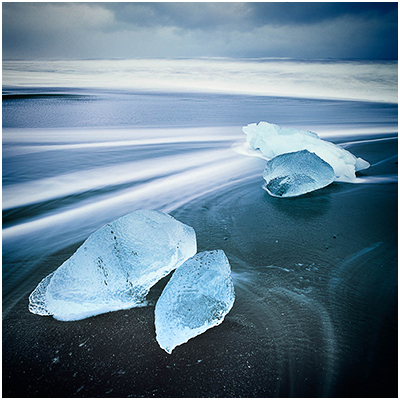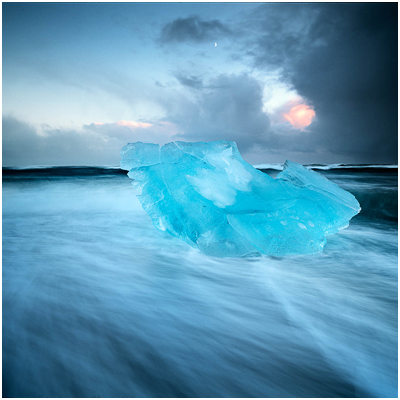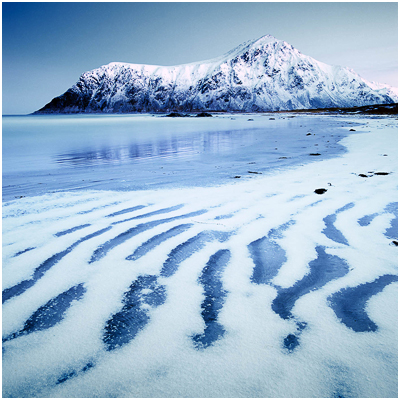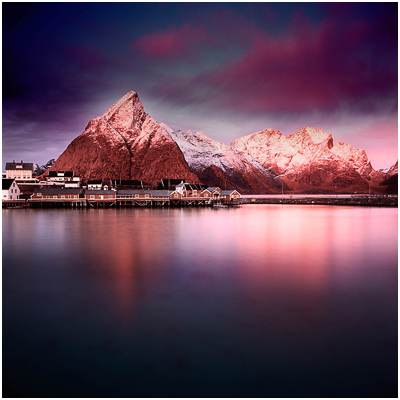I'm not usually prone to making telephoto shots in my photography. It's an admission that i'm none too proud about and I've often wondered why I prefer wide angle and standard lenses for composition.

I have a theory why most landscape photographers shoot with wide angles and standard lenses. I think that pictures are more believable if we feel we can step into the scene. Most wide angle shots start a few feet away from the camera, so it's not too hard to imagine you can step right into the frame. Similarly, but perhaps less so, with a standard lens, we get what is equivalent to the focal length of the human eye. It's a comfortable view of the world, so although we may not see the immediate ground that connects us to the final image, we're still able to make that leap from viewer to being there.
Telephoto shots lack the context to make us feel we're there. They are by nature, detached. But this is no bad thing, as telephotos allow us to separate out what is important, and in the case of wildlife for instance, we get a lot of presence if we can get a real close up of an animal. For me though, in terms of landscapes, I find it hard to get too excited about most telephoto shots unless there is some way for me to get context and feel I'm there.
Most beginners are poor at composition for the reason that they're not able to isolate what's important. Often images have everything in them, not just what they were attracted to, but the whole kitchen sink as well. I've heard that the human eye has a tendency to pay attention to around 2% of its field of view, meaning for instance, that if you were to pay attention to a friend you were talking to, you'd notice that you are only looking at one small area of their face - usually the eyes (one at a time!). Amateurs tend to see particular, very isolated areas of a scene and concentrate on that alone, take the image, and once home, realise that they got a lot more in the frame than what they were looking at.
If we look at my image above, taken of Reynisdrangar from afar (I was actually at Dyrhólaey at the time - a bit further west), you can well imagine that the entire focus, or point of the shot is the sea stacks of Reynisdrangar in the distance. Certainly, our eye naturally ends up at them and if we consider just how small an area they are of the frame, then it's fair to say that it's a tiny percentage. While I was there though, that is mostly all I could see. My eye was attracted to Reynisdrangar. However, I know from experience that it would be less prominent in the final frame, even though my visual system was using it's 2% to concentrate on it.
The key: I've learned to look at the periphery.
To see what else is in the frame, and try to use that to give the main part of the image context. I try to weigh up everything that is happening inside the image and think about how each object relates to every other one.
Firstly, I was high up on a cliff, so I used the white snow cliff edge as an anchor or framing reference point to give my eye some form context to where I was as a viewer. Secondly, I figured that the jeep tracks on the black sand were attractive and could sit nicely in the middle of the frame.
In fact, subconsciously, I think that the real reason for making this shot was actually the sweeping curves of black sand against the snow areas on the beach. I've fooled myself into thinking the whole shot is about the far off sea stacks - perhaps something for another posting on the blog some day.
This image was made with a 120mm lens on a Hasselblad. So it's equivalent to a 60mm in 35mm land. Slightly more telephoto, and just enough to pull in the far off sea stacks, while not too magnified to stop me from getting context to where I was standing (the snow foreground).
I remember not being sure if this image would work at the time, but my gut was compelling me to take it all the same: I simply could not - not take it. Sometimes things are never so clear in the image making process for me, and I'm always hesitant to put on lenses that are a little more magnified than my own vision is, because I often don't see compositions that way. Using a wide angle would not have worked - the sea stacks would have been pushed further away, into the distance, almost to the point of not being noticeable, and the whole image would have lacked presence.
So maybe the point of this post is to recognise that we only concentrate on a tiny part of the frame at one time, try to look around the periphery and judge how each object in the scene relates to the others, and think about getting out of your comfort zone of using just wide angles and standard lenses. It does take time to master each focal length (one of the many reasons why I don't like zooms - something to be discussed at another time perhaps).


